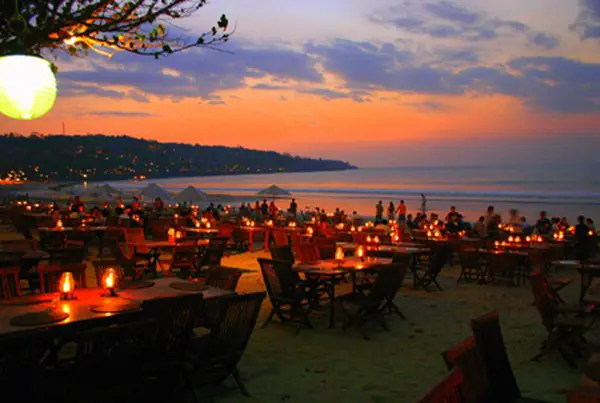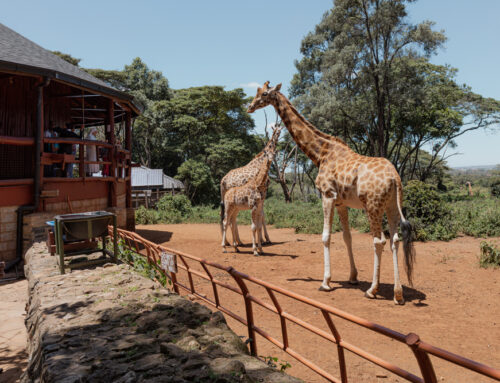A Foodie’s Guide to Tasting The Best of Bali on the Cheap

A Foodie’s Guide to Tasting Bali on the Cheap
Just hearing the word “Bali” evokes images of towering palm trees, pristine beaches, tree-covered mountains and alluring Hindu temples. When you start daydreaming about this island paradise, often referred to as the “Island of the Gods”, your mind probably doesn’t extend to Balinese foods – but it should.
Traditional Balinese food is one of the most underrated aspects of the country’s culture. But you don’t have to live in the dark about what people are eating on the most famous of all the Indonesian islands. This guide will help you get a true sampling of Balinese fare for unbelievably cheap prices on your next visit.
Where to Dine
Balinese culture makes it easy to find the places with local fare for dirt cheap prices. The best places to find traditional Balinese dishes are called warungs (meaning “shops”) or rumah makans (meaning “eating homes”) and they’re often marked with signs displaying the same words. They’re located on practically every corner and in every hole-in-the-wall across the island, and sometimes they’re wheeled kiosks or tiny wooden shacks big enough for one person to stand and cook inside.
Warungs are where the locals eat, and the prices, ranging from $1 to $3 for complete meals, are the best you’ll find. The following are eight dishes you must try when hopping from warung to warung across the island of Bali.
Main Courses
Nasi Goreng (Fried Rice)

Photo credit: Alpha
Nasi Goreng is a dish you’ll see on the menu at nearly every warung, and you’ll find yourself eating it more often than not. It’s Bali’s traditional fried rice meal, which is a combination of stir-fried rice, diced meats and vegetables. The meats can range from chicken to lamb, crab, shrimp or beef, and the vegetables are typically a mixture of onions, green peas and shallots. Scrambled eggs are often tossed into the mix as well.
Your giant, steaming pile of fried rice, meats, veggies and eggs will probably be accompanied by sambal (hot chili sauce), krupuk (puffy, deep-fried crackers) and possibly fresh sliced tomatoes and cucumbers. Nasi goreng is the ideal filler-upper after a day shopping in Ubud, surfing in Kuta or exploring temples across the island.
Mie Goreng (Fried Noodles)

Photo credit: Sharmeel A. R.
Mie goreng is Bali’s answer to pad thai in Thailand. The dish is similar to the country’s national dish, nasi goreng, but fried spaghetti-like noodles are substituted for fried rice. Order mie goreng for breakfast, lunch or dinner, and you’ll enjoy a heaping pile of noodles, meat, vegetables and scrambled egg. I preferred this dish to nasi goreng, but hey, I’m a noodle person.
Babi Guling (Suckling Pig)

Photo credit: Alpha
Babi guling is one of those dishes you’ll feel better about eating if you know less about how it’s made. Sucking pigs are rubbed with spices and roasted to perfection on a spit. The meat is so tender it will melt in your mouth, and you can’t leave Bali without a taste.
Sates (Meat Skewers)

Photo credit: Christopher Johnson
You’ll see sates, or satays, everywhere from the highest end restaurants on the island to street-side food vendors, and there’s no doubt you’ll get the best prices on these bite-size snacks from a vendor, warung or rumah makan.
Sates can be made with chicken, beef, fish, pork or just about any meat (and sometimes tofu). The traditional Indonesian snacks are small pieces of meat lumped together and twisted onto a lemongrass stalk or wooden skewer. The skewer is then grilled until the sides are slightly crispy. Once you taste one sate, you’ll probably order half a dozen more.
Bakso (Indonesian Meatball Soup)

Photo credit: Adam Cohn
You’re not as likely to find bakso at a warung as you are to find it served up from a cart on the side of the road. Bakso stands are plentiful across the island, and you’ll probably see people huddled around each one waiting for their serving of the popular Indonesian soup. Some of the best soup I tasted was from stopping a cook who was pushing his wheeled bakso stand along the side of the road.
Bakso starts with a broth that’s topped with Indonesian ground beef meatballs, tofu, noodles and herbs. Most stands offer a variety of hot sauces and condiments to pour on top, but you can never go wrong with a small dose of sambal, Bali’s famed chili sauce.
Nasi Campur

Photo credit: Fei Tan
Nasi Campur is the dish to order at a warung when you can’t make up your mind. You’ll get a heaping scoop of nasi, or rice, with miniature portions of a variety of other favorite Balinese dishes. You’ll be able to choose from a large selection of cooked meats and vegetables, including satays, fried seafood, hard-boiled eggs, spinach, tempeh, fried tofu, curried vegetables and of course, a dollop of sambal.
After Dinner (If You Dare)
Kopi Luwak (Luwak Coffee)

Photo credit: Sarah_Ackerman
Kopi luwak is the most expensive coffee in the world, running up to $70 a cup in most “Western” countries. However, in Bali, you can taste a cup at a plantation for roughly $4.
Kopi luwak is regarded by many foreigners as “poo coffee,” because it is made from the droppings of cat-like mammals called civets. Civets dine on the highest-quality coffee berries and excrete the coffee beans. The beans, drawn from their droppings, are collected, washed and roasted to create some of the most expensive coffee in the world.
If you can stomach the way the coffee beans are harvested, you’ll enjoy one of the smoothest cups of coffee you’ll probably ever have.
The Bottom Line
Bali is a travel destination where it pays to venture away from the resort buffets and beguiling tourist restaurants. Eating where and what the locals eat is guaranteed to introduce new flavors (and plenty of spice) to your tastebuds, and it’ll keep more money in your pocket too.
*********************************
About The Author: Courtney McCaffrey is the traveler, adventurer and surfer behind the BitsALife.com travel blog. She lives for travel – seeing new places, learning new cultures and surfing new waves.
**********************************






